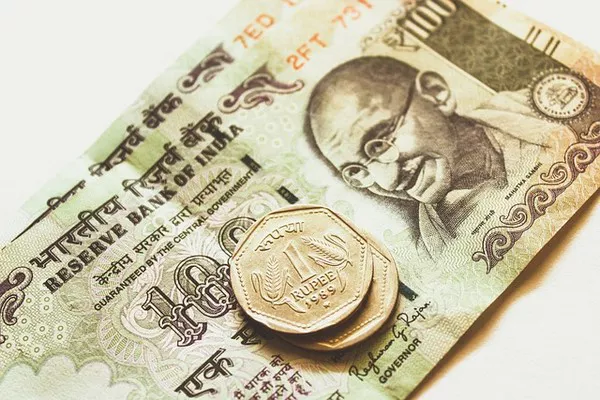The images adorning banknotes often provide a glimpse into a nation’s history, culture, and values. India, a land of diverse traditions and a rich tapestry of historical figures, is no exception. Indian Rupee banknotes feature prominent personalities and iconic symbols that hold deep significance in the country’s narrative. In this article, we will explore the faces that grace Indian Rupee banknotes, along with the historical and cultural contexts they represent.
Mahatma Gandhi on Indian Rupee Banknotes
Mahatma Gandhi, the leader of the Indian independence movement against British colonial rule, is perhaps the most iconic figure on Indian currency. He appears on almost all denominations of Indian Rupee banknotes. His image reflects India’s commitment to non-violence, truth, and social justice. Gandhi’s legacy as the “Father of the Nation” is a unifying symbol of India’s struggle for freedom and its enduring values.
Gandhi’s distinctive profile, his round glasses, and trademark khadi attire have become instantly recognizable. His image can be found on the obverse side of Indian Rupee notes in various denominations, underscoring the nation’s reverence for his ideals.
Prominent Personalities on Indian Rupee Banknotes
Apart from Mahatma Gandhi, Indian currency has featured other prominent figures who have played pivotal roles in the country’s history. Some of these personalities include:
Jawaharlal Nehru: India’s first Prime Minister, Jawaharlal Nehru, is featured on the obverse side of the ₹1 banknote. Nehru was a central figure in India’s post-independence era and a key architect of the nation’s democratic and socialist principles.
Sardar Vallabhbhai Patel: Known as the “Iron Man of India,” Sardar Patel was a crucial figure in the integration of princely states into a unified India. His image can be found on the ₹5 banknote.
Indira Gandhi: The only woman to have served as India’s Prime Minister, Indira Gandhi’s portrait graces the ₹20 banknote. She held a significant role in the nation’s political landscape, guiding it through various challenges.
M.G. Ramachandran: A popular actor and politician, M.G. Ramachandran, known as MGR, appears on the ₹100 banknote. He was a cultural icon and Chief Minister of Tamil Nadu, leaving a lasting impact on the state’s politics.
Cultural and Historical Symbols on Indian Rupee Banknotes
In addition to prominent personalities, Indian Rupee banknotes feature cultural and historical symbols that represent the nation’s heritage. These symbols often appear on the reverse side of the notes and vary depending on the denomination. Some notable symbols include:
The Ashoka Pillar: The Ashoka Pillar, with the Lion Capital, is a prominent symbol of India’s ancient history and is featured on the ₹50 note. It represents the national emblem of India and signifies the country’s commitment to truth, justice, and non-violence.
The Konark Sun Temple: The ₹10 note showcases the remarkable Konark Sun Temple, a UNESCO World Heritage Site known for its intricate architectural design and depiction of the sun god Surya’s chariot.
Rani ki Vav: The ₹100 note features an image of Rani ki Vav, a stepwell in Patan, Gujarat, recognized as a UNESCO World Heritage Site. It symbolizes India’s architectural and engineering prowess.
The Indian Parliament: The ₹50 note displays an image of the Indian Parliament building, representing the nation’s democratic values and governance.
Sanchi Stupa: The ₹200 note highlights the Sanchi Stupa, an ancient Buddhist monument situated in Madhya Pradesh. It signifies India’s rich cultural heritage and religious diversity.
Changing Designs and Security Features
Indian Rupee banknotes undergo periodic design changes and security enhancements to combat counterfeiting. The Reserve Bank of India (RBI), in collaboration with the Indian government, issues new notes with advanced security features such as watermarks, security threads, intaglio printing, and microlettering.
These changes ensure that the currency remains secure and technologically up to date. At the same time, they provide an opportunity to showcase different facets of India’s culture and history on the banknotes.
Commemorative and Special Edition Banknotes
In addition to the standard banknotes, India issues commemorative and special edition notes to celebrate significant events, personalities, and achievements. These notes often feature unique designs and colors and are highly sought after by collectors and history enthusiasts.
Conclusion
The faces and symbols on Indian Rupee banknotes offer a visual journey through the country’s history, culture, and values. Mahatma Gandhi’s image serves as a powerful reminder of India’s struggle for independence and its commitment to non-violence. Other prominent personalities and cultural symbols contribute to the rich tapestry of India’s narrative, reflecting its diverse heritage and dynamic evolution.
As India continues to grow and evolve, its currency notes will likely see further changes, and the faces that adorn them may change or expand. Nevertheless, the history and significance represented on these banknotes will remain a testament to India’s enduring values and achievements.


